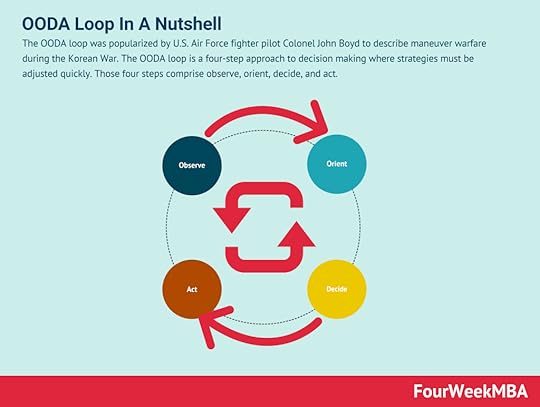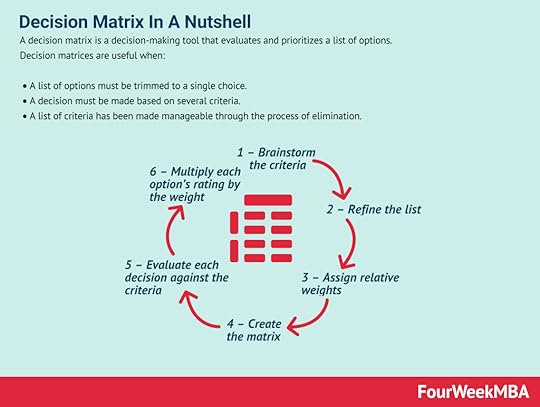5 Decision-Making Methods For Business
 The OODA loop was popularized by U.S. Air Force fighter pilot Colonel John Boyd to describe maneuver warfare during the Korean War. The OODA loop is a four-step approach to decision making where strategies must be adjusted quickly. Those four steps comprise observe, orient, decide, and act.
The OODA loop was popularized by U.S. Air Force fighter pilot Colonel John Boyd to describe maneuver warfare during the Korean War. The OODA loop is a four-step approach to decision making where strategies must be adjusted quickly. Those four steps comprise observe, orient, decide, and act.  The take-the-best heuristic is a decision-making shortcut that helps an individual choose between several alternatives. The take-the-best (TTB) heuristic decides between two or more alternatives based on a single good attribute, otherwise known as a cue. In the process, less desirable attributes are ignored.
The take-the-best heuristic is a decision-making shortcut that helps an individual choose between several alternatives. The take-the-best (TTB) heuristic decides between two or more alternatives based on a single good attribute, otherwise known as a cue. In the process, less desirable attributes are ignored. A decision matrix is a decision-making tool that evaluates and prioritizes a list of options. Decision matrices are useful when: A list of options must be trimmed to a single choice. A decision must be made based on several criteria. A list of criteria has been made manageable through the process of elimination.
A decision matrix is a decision-making tool that evaluates and prioritizes a list of options. Decision matrices are useful when: A list of options must be trimmed to a single choice. A decision must be made based on several criteria. A list of criteria has been made manageable through the process of elimination. A cost-benefit analysis is a process a business can use to analyze decisions according to the costs associated with making that decision. For a cost analysis to be effective it’s important to articulate the project in the simplest terms possible, identify the costs, determine the benefits of project implementation, assess the alternatives.
A cost-benefit analysis is a process a business can use to analyze decisions according to the costs associated with making that decision. For a cost analysis to be effective it’s important to articulate the project in the simplest terms possible, identify the costs, determine the benefits of project implementation, assess the alternatives. In general, terms, go/no-go decision making is a process of passing or failing a proposition. Each proposition is assessed according to criteria that determine whether a project advances to the next stage. The outcome of the go/no-go decision making is to assess whether to go or not to go with a project, or perhaps proceed with caveats.
In general, terms, go/no-go decision making is a process of passing or failing a proposition. Each proposition is assessed according to criteria that determine whether a project advances to the next stage. The outcome of the go/no-go decision making is to assess whether to go or not to go with a project, or perhaps proceed with caveats. Main Free Guides:
Business ModelsBusiness StrategyBusiness DevelopmentDistribution ChannelsMarketing StrategyPlatform Business ModelsNetwork Effects
The post 5 Decision-Making Methods For Business appeared first on FourWeekMBA.
Published on December 26, 2020 14:57
No comments have been added yet.



